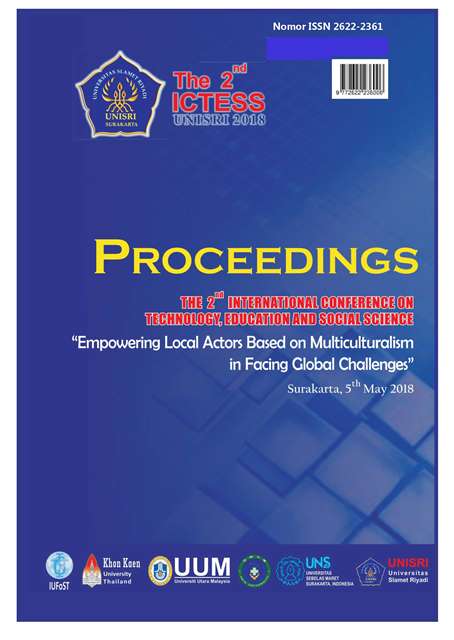The Student-Teachers’ Understandings of EIL Approach in A Microteaching Course
Abstract
This paper presents a study about the students-teachers’ understandings of EIL approach inthe three mini lessons which includes one of the topics requirement: integrating
multicultural approaches to provide small and medium enterprises with competitive
advantage. In particular, the study aims to find what eight student-teachers’ understandings
of EIL approach are in a Microteaching course (ED603C). English is defined as an
International Language (EIL) approach as the situation where “English is used to
communicate across linguistic and cultural boundaries, often in more formal contexts, then
there seems little reasons to require these boundaries must coincide with national bordersâ€.
From this definition, it can be implied that English has been used for the objective of wider
communication purposes for people all over the world. The data were collected through
lesson plans, Action Research Teaching Journals (ARTJs), and portfolios. The study found
that there were three prominent themes where EIL approach is defined. First, the studentteachers
got their initial understanding of EIL approach as comparing two cultures (western
and local cultures). Second, the student-teachers got better understandings of EIL by
accommodating their students’ cultures. Third, the student-teachers had finally
accommodated EIL approach by presenting not only local and target language cultures, but
also international cultures. In addition, presenting various kinds of cultures were claimed to
be a successful way to increase their students’ interest of the materials as well as their
students’ awareness of cultural diversities. It is expected that this research will give better
understanding to the development and implication of EIL approach in the future. The paper
ends with some recommendation for improvement of EIL approach and other multicultural
approaches.
Keywords: student-teachers; EIL approach; microteaching course; target language cultures;
international cultures

